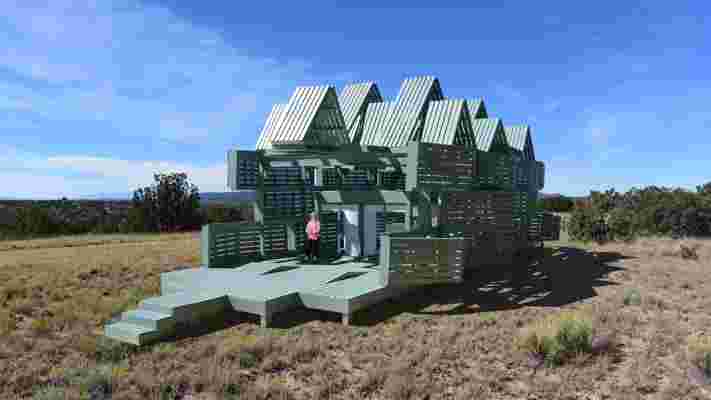Artist and designer Michael Jantzen is known for pushing the envelope when it comes to futuristic, eco-friendly designs. Yet his Malleable Autonomous Retreat House concept just might take that to a whole new level. Jantzen's idea shows that off-grid architecture can adapt based on what the owner wants—even after it’s already built. A glass-enclosed main chamber serves as the primary living space, complete with toilet, bath, kitchen area, and bed. The space is nested within an elaborate canopy of hinged panels that blossom outward, expanding the initial simple rectangular shape into a beautiful, complex series of angles and peaks at the whim of the occupants.

These panels do more than dramatically transform the outward appearance of the house; they also allow the owners to determine how the space interacts with the elements. Using pulleys or solar-powered electric motors, the panels can be tilted to control how much wind, sunlight, or rain, for example, penetrates within. Some panels even rise up to become makeshift lounge chairs. How much or little the house changes is up to the owner. “As the hinged panels are opened to any degree, the shape of the house begins to change into a totally unpredictable form, which can be based on the desired climatic conditions under the canopy and/or just aesthetic preferences,” Jantzen says.
The Malleable Autonomous Retreat House reflects the designer’s long history as a proponent of responsible, sustainable building. The self-contained structure is constructed from easy-to-assemble modular parts and is intended to be energy self-sufficient, drawing power from renewable sources such as solar generators.
The concept draws on Jantzen’s previous M-House designs, which emphasize a bold, artistic approach to sustainable architecture and modular recyclable construction. The Malleable Autonomous Retreat House takes these ideas beyond initial construction and allows the home to constantly change. “Much of my architecture work has explored ways in which buildings can change relative to changing needs,” Jantzen says. “I prefer forms that can change and adapt.”
